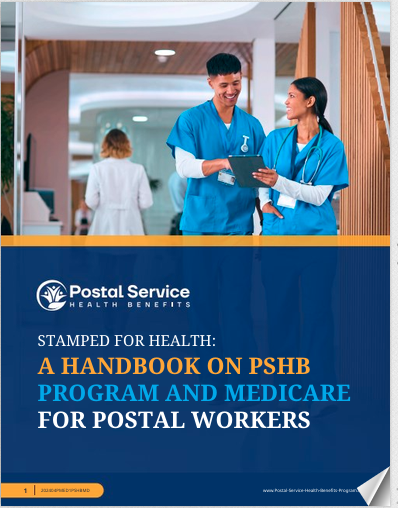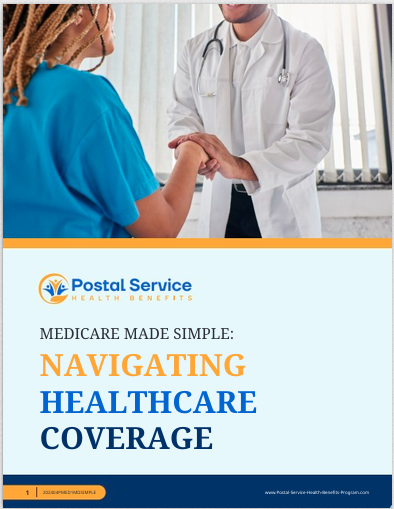Key Takeaways:
- Postal workers have two main options for health coverage: the Federal Employees Health Benefits (FEHB) and the Postal Service Health Benefits (PSHB) programs, each offering distinct cost and coverage advantages.
- Understanding the differences in premiums, out-of-pocket expenses, and coverage options between FEHB and PSHB is key to choosing the right plan for your healthcare needs.
Postal Workers, Which Plan Is Right for You? Comparing Costs and Coverage Between PSHB and FEHB
Choosing the right health insurance is one of the most important decisions postal workers will make each year. With the introduction of the Postal Service Health Benefits (PSHB) program in 2025, postal employees and retirees are faced with a critical choice: should they stay with the Federal Employees Health Benefits (FEHB) program or transition to PSHB? This comparison will help you understand the key differences between the two options, ensuring you are better equipped to make an informed decision about your health coverage.
A Brief Overview of PSHB and FEHB
The FEHB program, established in 1960, has long been the go-to for federal employees, offering a range of health insurance plans with varying coverage levels. Postal workers, as part of the federal workforce, have traditionally been included in this program. However, under the Postal Service Reform Act of 2022, postal workers will soon have the option to choose PSHB, a program specifically designed for Postal Service employees, beginning in 2025.
While both PSHB and FEHB are part of the federal healthcare system, the PSHB program is tailored more closely to the unique needs of postal workers. This specialized structure could provide postal employees with more personalized health coverage options, but it also means making an important decision regarding which plan best fits individual healthcare needs.
Comparing Coverage: FEHB vs. PSHB
When comparing health plans, it’s essential to look beyond costs and examine what’s covered under each option. Both FEHB and PSHB will likely offer a wide range of healthcare services, including preventive care, doctor visits, hospital stays, and prescription medications. However, there are some significant differences to keep in mind.
Access to Healthcare Providers
FEHB plans typically provide a broad network of doctors, hospitals, and healthcare providers, with nationwide coverage. This is particularly beneficial for postal workers who may relocate or travel frequently. In contrast, PSHB may offer more regionally tailored networks, which could limit access to providers outside of certain areas but might come with lower premiums or out-of-pocket costs.
Postal employees need to evaluate whether they prefer a more extensive provider network under FEHB or are comfortable with a possibly narrower PSHB network, depending on their healthcare needs and location.
Prescription Drug Coverage
Both FEHB and PSHB plans are expected to cover prescription drugs, but the scope and cost of this coverage could vary. While FEHB provides well-established drug coverage with some plans offering extensive formularies, PSHB may develop more specific offerings that cater to postal workers’ unique healthcare demands, such as job-related conditions.
Prescription coverage is a critical factor in the decision-making process, especially for workers or retirees who rely on long-term medications. Investigating each plan’s drug formulary and out-of-pocket costs for medications can help determine the better fit.
Cost Considerations: Premiums and Out-of-Pocket Expenses
For many, the deciding factor between PSHB and FEHB may come down to costs. It’s important to understand not only the premiums associated with each plan but also other expenses like deductibles, copayments, and out-of-pocket maximums.
Premiums
While exact premium amounts for PSHB are yet to be determined, it’s anticipated that PSHB may offer postal workers lower premiums compared to some FEHB plans. This is due to the PSHB’s specific design for postal employees, which may result in more affordable coverage options. However, it’s important to consider the trade-offs—lower premiums might come with higher out-of-pocket costs or more limited provider networks.
FEHB offers a wide variety of plans, some with higher premiums but more comprehensive coverage. Postal workers who prioritize lower monthly payments may find PSHB more attractive, while those looking for broader coverage might lean toward FEHB despite potentially higher premiums.
Out-of-Pocket Costs
Out-of-pocket expenses, including deductibles, copays, and coinsurance, can vary significantly between PSHB and FEHB plans. FEHB plans typically offer a range of cost-sharing options, with higher premium plans often offering lower deductibles and copays.
With PSHB, the goal is to provide postal workers with tailored options, which could mean lower out-of-pocket costs for specific services frequently used by postal employees. However, these savings may not apply to all types of care, so it’s essential to analyze the total cost of care rather than just focusing on monthly premiums.
Eligibility and Enrollment: What Postal Workers Need to Know
Transition Timeline
As of January 2025, PSHB will become available to all postal employees and retirees. At that time, postal workers will need to decide whether to transition to the PSHB program or remain in the FEHB program. It’s important to note that for most retirees, enrollment in Medicare Part B will be a requirement if they choose PSHB. This added layer of Medicare coordination may appeal to some retirees looking for more robust coverage.
Coordination with Medicare
For postal retirees, Medicare eligibility plays a significant role in their healthcare decision-making process. Under PSHB, retirees who are eligible for Medicare Part A will be required to enroll in Medicare Part B as well to access the full benefits of their PSHB plan. This Medicare-PSHB coordination could lead to lower out-of-pocket costs for retirees, as Medicare will act as the primary payer for most services.
In contrast, FEHB does not mandate Medicare Part B enrollment, although it is encouraged. Retirees who prefer to rely on FEHB without the added expense of Medicare Part B may opt to stay with FEHB rather than switch to PSHB. Understanding how each plan works with Medicare is crucial for retirees who want to make the most of their coverage while minimizing costs.
Key Factors to Consider When Choosing Between PSHB and FEHB
When deciding between PSHB and FEHB, postal workers should consider the following factors:
-
Healthcare Needs: Consider how often you visit healthcare providers and the type of care you need regularly. If you have a chronic condition, ensure that your chosen plan offers comprehensive coverage for your needs.
-
Provider Preferences: Do you have a preferred doctor or hospital? Verify if they are in-network for the plans you’re considering, particularly if you’re leaning toward PSHB, which may have a narrower network.
-
Cost: Compare not only the monthly premiums but also the out-of-pocket costs associated with each plan. It’s essential to look at the overall cost of healthcare throughout the year, including potential hospital stays, medications, and specialist visits.
-
Retirement Planning: If you’re nearing retirement, consider how each plan coordinates with Medicare. PSHB’s requirement for Medicare Part B enrollment could reduce out-of-pocket costs, but it also comes with additional premiums.
Making the Right Decision for Your Health and Budget
With the advent of PSHB, postal workers have a new opportunity to choose a plan that suits their unique healthcare needs. Both PSHB and FEHB have their pros and cons, and there isn’t a one-size-fits-all answer for everyone. Consider your healthcare usage, financial situation, and whether you are nearing retirement to help guide your decision.
By comparing the coverage and cost differences between PSHB and FEHB, postal workers can make a more informed choice that best suits their individual circumstances.
Postal Workers’ Health Coverage Choices Moving Forward
As the PSHB program rolls out in 2025, postal workers and retirees will face a significant decision regarding their healthcare coverage. By taking the time to understand the differences between PSHB and FEHB—especially in terms of costs, provider access, and coordination with Medicare—postal employees can ensure that they select the plan that best aligns with their healthcare needs and financial situation.
Contact Information:
Email: [email protected]
Phone: 7738291398







